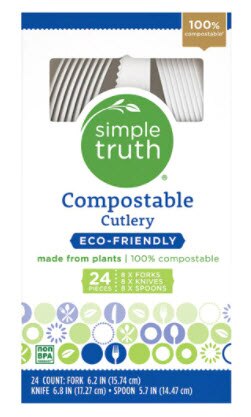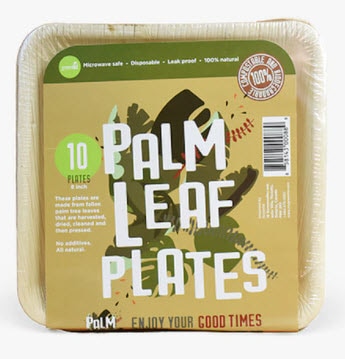Months before the winter holidays induced consumption and cast-off anxiety, the curbside recycling program in my city suddenly stopped. If you weren’t paying attention to the news, you kept hauling your blue bin to the end of your driveway, wondering why it never emptied.
The abrupt suspension happened not for lack of recycling demand, but for lack of recycling truck drivers, a different story that doesn’t matter for this piece. Relevant, though, is that a few weeks before pick-up resumed, shortly before Thanksgiving, Chattanooga and its startup accelerator created a competition urging entrepreneurs to figure out ways to “change the future of recycling for the city” because, folks, recycling here is generally kind of a mess — and I’m sure it’s not the only place with that sad status.
Add the gluttony of Thanksgiving through New Years, and good luck figuring out what’s deemed recycle-worthy, no matter where you live. To make matters exponentially complicated, recyclable items vary depending on location, namely the program and/or company handling recycling. For example, some municipalities don’t collect glass while others do.
Check your local program to see what’s acceptable, but know that even your diligence in doing so isn’t foolproof. To wit: Chattanooga collects plastics marked 3 through 7 — but those items aren’t actually being recycled. They end up in the landfill. I know (hope?), you’re wondering why. Well friends, it’s because the city code says plastics #1-7 must be accepted, and at one time that made sense, but it sure doesn’t now.
“Just because a product has the recycling chasing arrows on it and a grade number listed does not make it recyclable,” says Eve Fox, digital director of Beyond Plastics, an education and advocacy organization based at Bennington College’s Center for the Advancement of Public Action.
That said, as a general rule, here are holiday items you might think you can recycle — but can’t:
Wrapping paper and gift bags
If they’re made of paper only, you can recycle them once you remove tape and sticker name tags. But you can NOT recycle all that gorgeous wrapping paper with metallic, glitter or foil accents, nor can you recycle gift bags with similar effects.
Alternative
Wrap your goodies in something else: sheets, scarves, the blank side of paper grocery bags on which you sketch. Or wrap them in bona fide wrapping paper — and remove the paper gently so you can reuse it year after year.
Tinsel
Yah, it’s aluminum-ish looking, but you can’t recycle it.
Alternative
Your (real) Christmas tree can happily be returned to the earth after the holiday — but not with tinsel on it. So skip the tinsel — or remove it from the tree and use it … forever.
Ribbons and bows
Sorry, no-go here either. As far as my layman’s eye and fingertips can tell, those stock bows are made of some weird combo of paper and plastic. Why oh why?
Alternative
Leave the package bare; simplicity is a breath of fresh air this time of year. But if you really like to dress up packages, I bet you’ve got some ribbon-type things around your home: string that held something in place or a skinny tie or cloth belt you can repurpose. Better yet, head outside, and see if you can find colorful leaves, pinecones or other plant parts to use as accents.
Bubble wrap, foam packaging and peanuts, cellophane
Ugh. Bubble wrap and cellophane are made of plastic, but not the kind you can put in your recycling bin. That said, Kroger will take your bubble wrap, and Publix will take your foam egg cartons and (clean) foam cups and foam take-out containers, but neither wants your foam packaging.
Alternative
The main way around this is to buy fewer items with packaging, obviously. Barring that, purchase stuff from a company that cares about the environment and creates products and packaging that reflect as much. If you’re mailing a package, stuff some crumpled paper in there for padding (or reuse bubble wrap and foam packaging you’ve saved).
One bright spot as far as packaging is that (clean) cardboard is super-duper sustainable to recyclable (rip off the shipping labels and tape, if you can, though some recyclers say you don’t need to). Yay!
Black plastic cutlery
It’s essentially invisible to recycling machinery, Fox says. Here’s more on that woeful story, thanks to Beyond Plastics. Don’t use it for your holiday gathering.
Alternative
Silverware. Then do the dishes. Or let your dishwasher do them.
Plastics marked 3 through 7
Whether you’re serving food or getting pretty for a party with self-care products from containers with those grades, it’s highly unlikely recyclers want them when they’re empty.
“The only plastics that are widely accepted by recycling programs are grades 1 and 2. The lack of markets for plastics number 3 to 7 is a widespread phenomenon,” Fox says. “Unfortunately, using recycled plastics is far more expensive than just using new, virgin, plastic, so companies tend not to do it because there are no market-related or governmental forces at work to make them.”
Like I said, earlier: sad. And confusing.
Alternative
Instead of serving drinks that come in plastic, offer drinks that come in aluminum cans. Good news: Aluminum cans are efficient to recycle and can be recycled for eternity (well, something like that). Yay!
Gift cards and plastic gifts
Plastics without recycling marks are “definitely not recyclable,” Fox stresses. “Avoid buying anything for which you can’t envision a clear end of life, as the reality is that it’s going to end up in either a landfill or an incinerator. Both of these are not good options — plastics in our landfills break down into smaller pieces slooooowly over hundreds of years and leach harmful chemicals into the soil and water table as they do so.
“Plastics that end up in incinerators meet a much quicker end, but they speed climate change and pollute our air, water and soil — and hence, all of our bodies and wildlife.”
Alternative
This one is easy: Take your old stuff to the thrift store. That’s a back-end solution.
Better yet, start at the front end by buying second-hand items — with embedded symbolism. I wish I could claim this idea as my own, but I read it in a New York Times piece tantalizingly titled How to Buy Nothing New This Holiday Gifting Season.
It’s genius because it’s a game of sorts, one that offers more surprise and novelty than receiving a brand-new gift, while also making the gift giver’s hunt for a present fun: Each holiday season, the piece’s author and her husband seek out gifts for each other from a local thrift store, “something delightful that is a reflection of our individual aesthetics or obsessions,” she writes.
Now, something like that is worth celebrating.
Journalist Mitra Malek often writes about sustainability. She recently discovered that some government-run recycling locations in her county accept certain items while others don’t — without clear explanations why.



